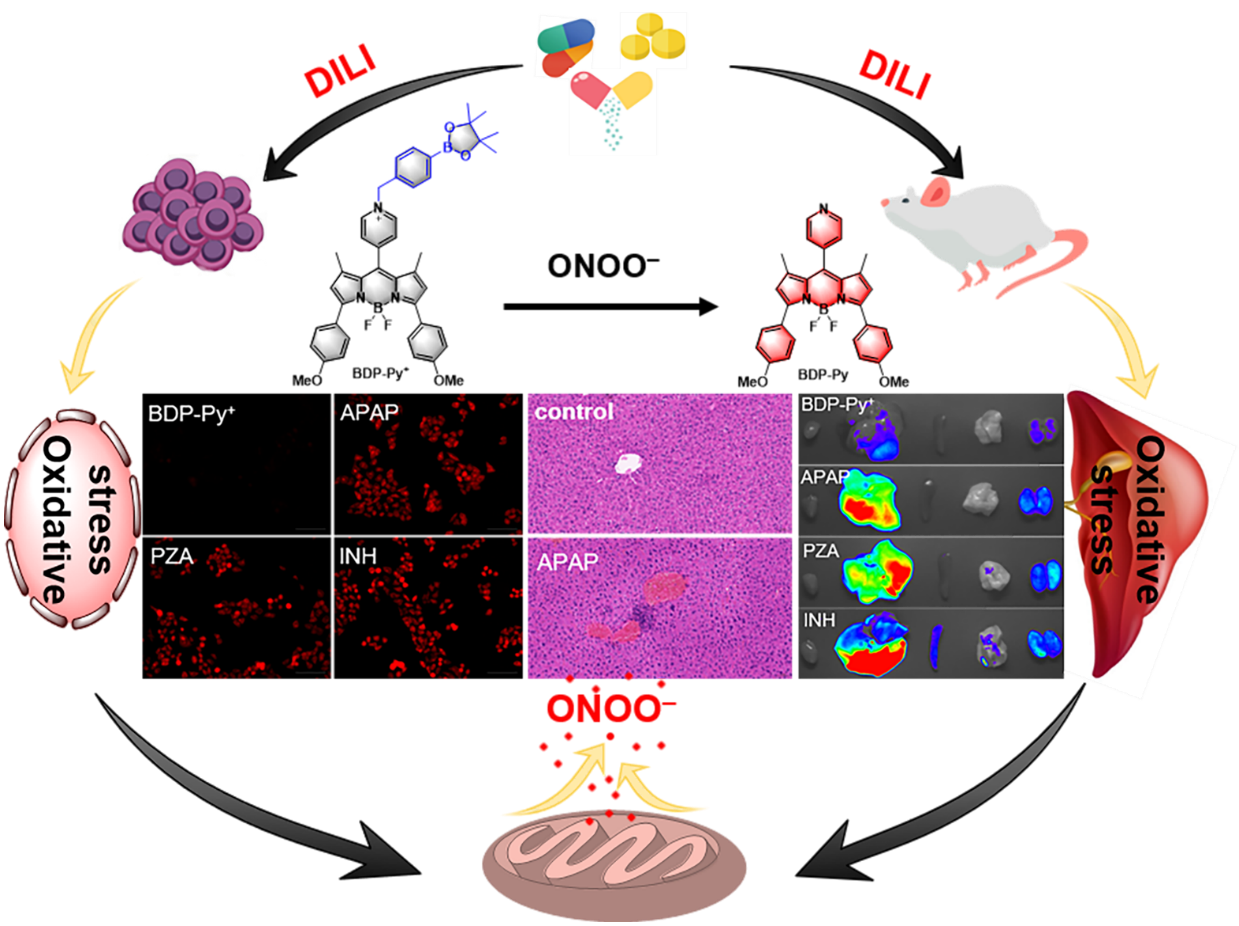Recently, Weili Zhao group has made new progress in the field of small molecule fluorescent probes. The result was published in an international journal (Chinese Chemical Letters) under the title “Endogenous peroxynitrite activated fluorescent probe for revealing anti-tuberculosis drug induced hepatotoxicity”.

Pyrazinamide (PZA), isoniazid (INH) and rifampicin (RFP) are all commonly used anti-tuberculosis drugs in clinical practice, and long-term medication may cause severe liver damage and toxicity. The level of peroxynitrite (ONOO–) generated in liver has long been regarded as a biomarker for the prediction and measurement of drug-induced liver injury (DILI). In this article, we constructed a BODIPY-based fluorescent probe (BDP-Py+) that enabled quickly and sensitively detect and image ONOO– in vivo. Utilizing this probe, we demonstrated the change of ONOO– content in cells and mice model of DILI induced by acetaminophen (APAP), and for the first time revealed the mechanism of liver injury induced by antituberculosis drug PZA. Comparing with the existing serum enzymes detection and H&E staining, the probe could achieve early diagnosis of DILI before solid lesions in liver via monitoring the up-regulation of ONOO– levels. Collectively, this work will promote the understanding of the pathogenesis of anti-tuberculosis drug induced liver injury (ATB-DILI), and provide a powerful tool for the early diagnosis and treatment of DILI.
Doctoral student Nannan Wang and master student Han Wang of the Key Laboratory of Special Functional Materials are the co-first authors of the paper. This research was financially supported by the National Natural Science Foundation of China, the China Postdoctoral Science Foundation and Key Scientific and Technological Project of Henan Province.